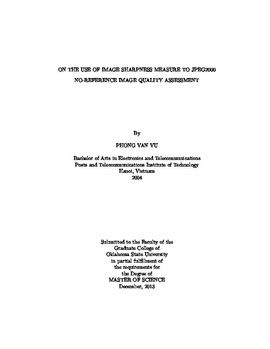| dc.description.abstract | Digital images play an important role in social communities today. Many applications and devices have been developed to capture images, compress and store them, and transfer from/to servers to/from end-users over broadband connection, wireless communications, etc. In most applications, the goal is to maintain the high quality of the images, but how to assess the quality of an image remains a challenge task. Therefore, an effective and robust method of image quality assessment is crucial and required. One attribute that contributes to the quality of an image is its sharpness level. It is easy and effortless for human subjects to judge sharpness level within an image or cross images. However, the task is still challenging for a computer; only a handful of algorithms can generate a local image sharpness map. Here, we present a simple, yet effective wavelet-based algorithm for estimating both global and local image sharpness (FISH, Fast Image SHarpness). FISH operates by first decomposing the input image via a three-level separable discrete wavelet transform (DWT). Next, the log-energies of the DWT sub-bands are computed. Finally, a scalar index corresponding to the image's overall sharpness is computed via a weighted average of these log-energies. Testing on several image databases demonstrates that, despite its simplicity, FISH is competitive with the currently best-performing techniques both for local sharpness estimation and for no-reference image quality assessment of blurred images.It is also known that the destruction of sharp regions due to JPEG2000 encoding reduces visual quality. Therefore, a sharpness/blurriness estimator can be used to estimate quality of JPEG2000-compressed images. In Chapter 4, we propose the EDIQ algorithm, (EDge-based Image Quality), that estimate quality of JPEG2000-compressed images via the edge/near-edge regions, which are defined by applying edge detection and edge-pixel dilation. Then, perceived blurring is estimated by the FISH algorithm and perceived ringing is estimated by the local variance of Laplacian coefficients in the edge/near-edge regions. These local values are combined and collapsed into the final quality index of the image. Testing on various subsets of JPEG2000-compressed images demonstrates the efficacy of EDIQ in predicting the quality of JPEG2000-compressed images. | |
